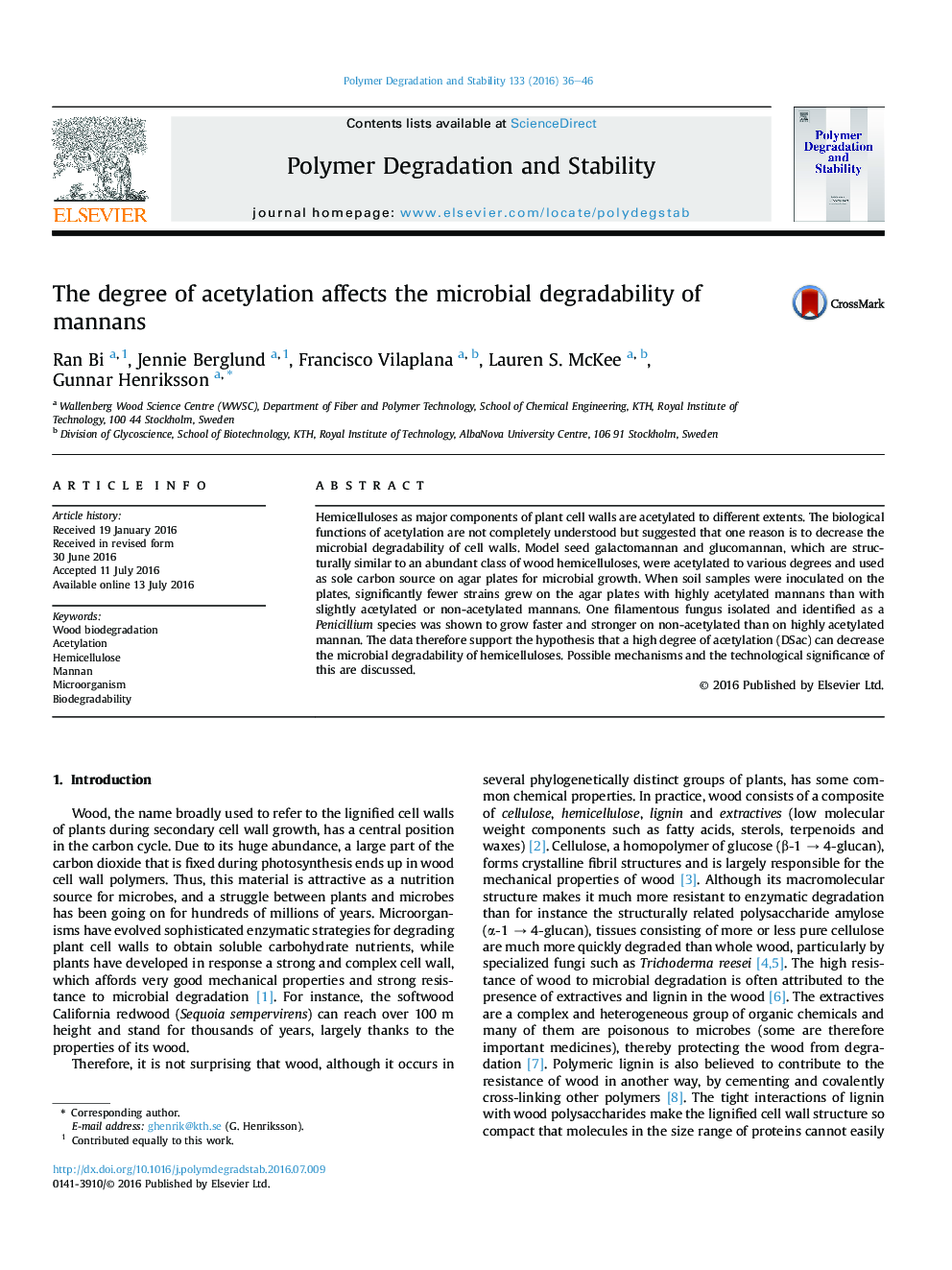| Article ID | Journal | Published Year | Pages | File Type |
|---|---|---|---|---|
| 5200946 | Polymer Degradation and Stability | 2016 | 11 Pages |
Hemicelluloses as major components of plant cell walls are acetylated to different extents. The biological functions of acetylation are not completely understood but suggested that one reason is to decrease the microbial degradability of cell walls. Model seed galactomannan and glucomannan, which are structurally similar to an abundant class of wood hemicelluloses, were acetylated to various degrees and used as sole carbon source on agar plates for microbial growth. When soil samples were inoculated on the plates, significantly fewer strains grew on the agar plates with highly acetylated mannans than with slightly acetylated or non-acetylated mannans. One filamentous fungus isolated and identified as a Penicillium species was shown to grow faster and stronger on non-acetylated than on highly acetylated mannan. The data therefore support the hypothesis that a high degree of acetylation (DSac) can decrease the microbial degradability of hemicelluloses. Possible mechanisms and the technological significance of this are discussed.
